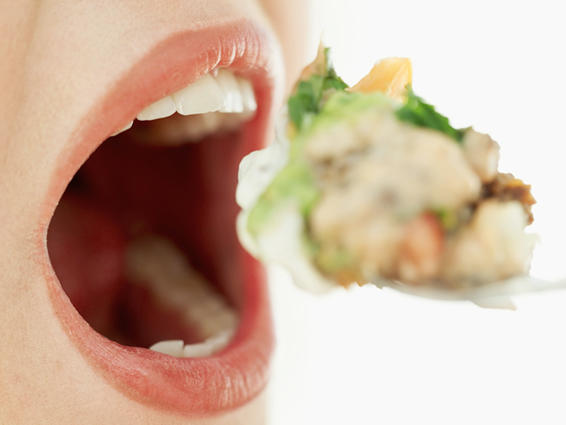I was recently invited to dinner at a long-standing restaurant on the Long Island waterfront. It was 7:30 p.m. on a Saturday and the restaurant was half empty. What’s more, the service was slow. I was hungry.
Eight of us were seated at a round table not far from the restrooms. An occasional whiff of pine-scented cleaning fluid swirled by our seats. My new table acquaintances droned on with their unabridged life stories.
Enter my chicken Parmesan — at last there was some relief, or so I thought. It was massive: an inch-thick alien creature that totally enveloped the extra large platter. I thought animals like this were extinct eons ago. Without my touching, tomato sauce oozed over the edges of the plate in a lava-like flow and onto the white tablecloth, like blood from a wound staining a hospital sheet.
Wedged on top of the beast loomed a towering pile of cheese-soaked ziti, perched like a yellow-capped mountain range on the plains. There were pounds of food on the plate. Only Joey Chestnut, the Nathan’s Hot Dog champ, might have had the fortitude to finish this dish. The whole experience — the pine scent, the huge portion, the sloppy presentation, the long wait, the boring guests — equaled a big turnoff. I lost my appetite.
While the restaurant can’t control my dinner companions, they can do something about the rest.

This is not just for restaurants. In the food product world our desire to eat is similarly affected — it’s the packaging; the title titillation or name of the product; the room lighting and location on the shelf; the color of the label; the font; the logo.
It’s the price; the ambient room noise or music; the noise the package makes; the sound the food makes in your mouth; the scent of the room where the food is sold; and much more. In our minds, we “eat” the package — it’s a direct link to the product inside. Our minds control our mouths.
And don’t forget our own individual preferences. Each customer has a lifetime collection of stimuli and experiences that affect our judgements and make us unique. Spicy to me may be mild to you. Exciting to me maybe routine for others.
Nowadays, competition in the food industry is scary. Hundreds of restaurant seats go unfilled and thousands of artisanal food products go unsold. If food producers only looked at the full picture, they would fare better. Study after study tells us that taste and food appreciation is only partially from the tongue — the rest comes from various stimuli affecting our minds.
It’s called the science of gastrophysics, and it’s important for your customer’s taste buds and for your bottom line. Though this is not new science, it’s often overlooked. We hear of menu psychology and scent stimulation, but we focus on what we know —the food — without a full appreciation of the vast array of other things that equally affect success.
Each time we serve or sell food, we create an emotional bond with the purchaser. The better we are at controlling the brain brattle — the many incitements that rattle our brains causing us to judge, appreciate and react — the more likely we are to succeed. Walt Disney was known for over-managing the customer experience. In his opinion, no detail was too small. Maybe we should consider his perspective more seriously when our product doesn’t fly off the shelves or our seats go unfilled.
None of our group from that Saturday night will return to that restaurant on the waterfront. Despite the great chef and the picturesque location, the experience didn’t click. Regardless of how tasty my massive chicken Parmesan was, the other stimuli turned me off completely. Just another case of mind over mouth.
Interested in learning to run your own food business? Click here to learn more about ICE's Restaurant & Culinary Management program.




